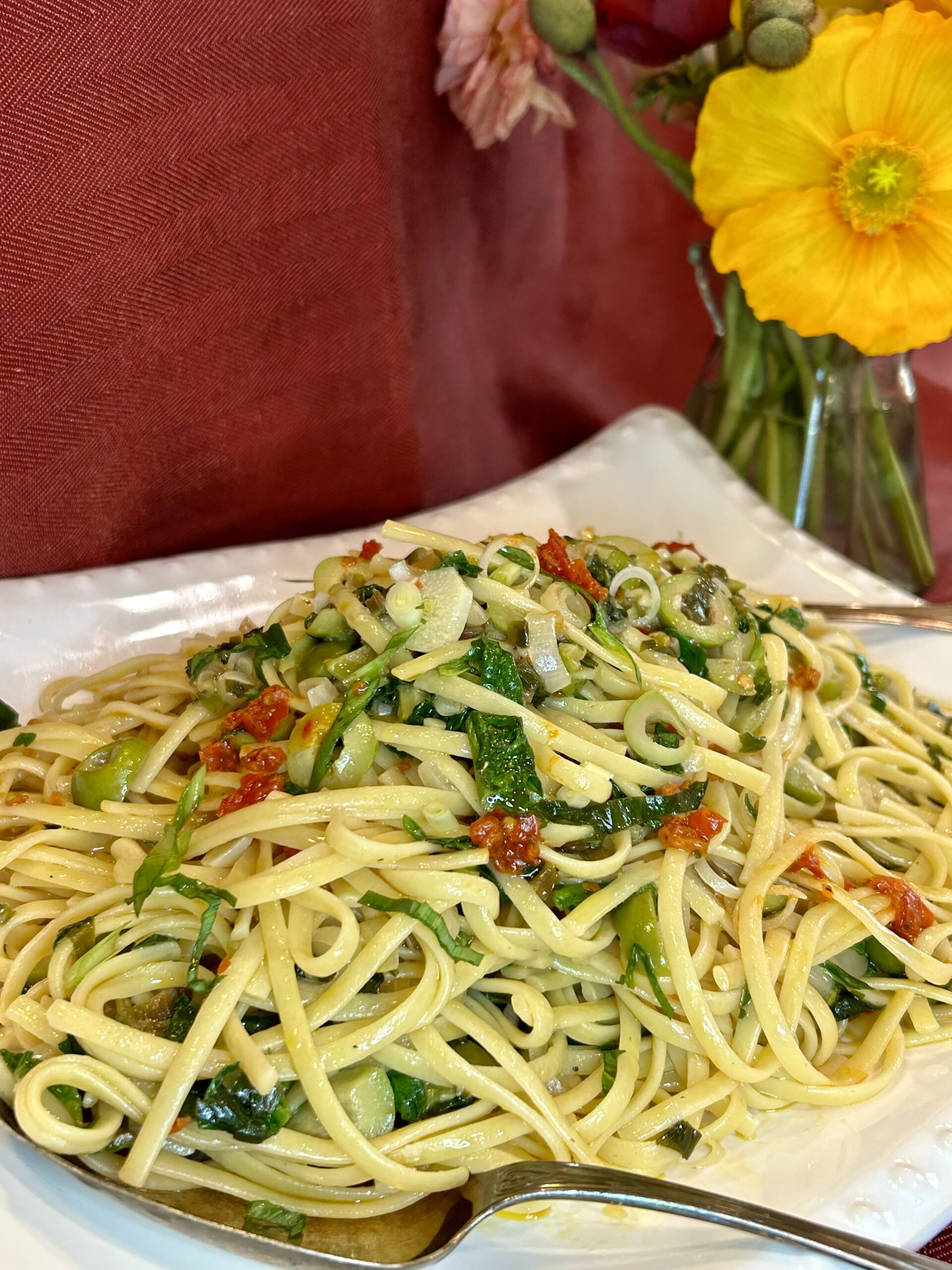- 1-pound uncooked linguine
- 2 spring onions, or 6 green onions
- 1/2 cup olive oil
- 6 large garlic cloves, thinly sliced
- 1-ounce flat anchovy fillets in olive oil
- 1/4 cup capers, drained
- 2 teaspoons Calabrian chiles, in oil
- 1/2 cup dry white wine
- 1/2 cup Castelvetrano olives, pitted, coarsely chopped
- 3 cups loosely packed baby arugula
- 1/2 cup loosely packed fresh parsley, chopped
- Additional olive oil for serving
Bring a large saucepan filled with water to a boil. Add in 2 tablespoons of salt and the linguine, stirring to keep the pasta from sticking together. Cook for 2 minutes less than the time listed on the pasta package. Reserve 1 cup of pasta water, then drain. Set aside.
While the pasta cooks, thinly slice the spring onions, separating the bulbs from the greens. Thinly slice the garlic, chop the olives and the parsley. Set aside. Measure out all other ingredients as the cooking process moves quickly. Best to be ready with each ingredient.
Working with a large high-sided pan, such as a Dutch oven, oven medium heat, add in the olive oil, cooking for 1 minute. Add in the prepared onion bulbs, garlic, anchovies, drained capers, and chilis, stirring to combine, cooking for about 3-5 minutes, until the anchovies have melted in, and the onions begin to soften. Increase the heat to medium-high, add the wine, stirring often, cooking for 2-3 minutes until the wine is nearly evaporated. Stir in the olives and onion greens stirring often until heated through, about 2 minutes.
Add in the pre-cooked linguine, reserved pasta water, tossing to combine, simmer for 3-4 minutes. Off the heat, fold in the arugula and parsley, allowing the pasta to absorb the water, about 3-5 minutes. Divide among the serving bowls, drizzle a bit more olive oil on top and serve.
Classic puttanesca is traditionally made with big bold flavors, most always including tomatoes, anchovies, capers, olives, onions, garlic, and Calabrian chilies. Always fragrant and enticing in so many ways. This recipe brings a lighter Spring version without the tomatoes, but with the same alluring aroma and rich flavor it is known for.
Puttanesca Pasta is simple to make and said to have originated from Naples, possibly dating back to the mid-20th century, or earlier. Explanations for the origin of the name are many. However, the modern name of this preparation refers to pasta ‘prepared as it comes’, meaning that is made with items readily available in any Italian pantry. This is the beauty of Puttanesca Pasta in that all the ingredients can be found on our Market shelves, ready to fill your Italian pantry for an easy go-to dinner that is quick to bring to the table.
View upcoming cooking classes here.
Recipe: Cindy Ramsey
Photo: Cindy Ramsey

